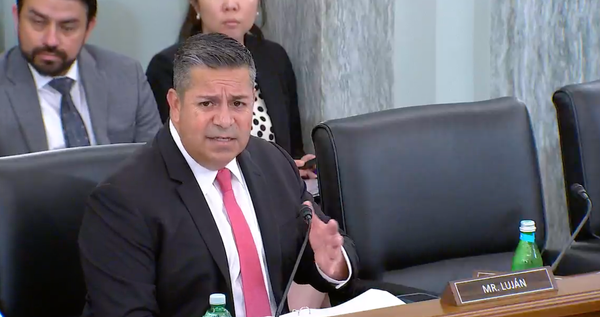John English: Isolating Last-Mile Service Disruptions in Evolved Cable Networks
The adoption of new technologies presents operators with a plethora of new variables to manage on the user control plane.

Cable operators are increasingly investing in next-generation network infrastructure, including upgrades to support distributed access architecture and fiber to the home.
By bringing this infrastructure closer to subscribers, cable operators are evolving their networks, adopting greater virtualization and redistributing key elements toward the edges. They expect these changes to increase their network’s interoperability and, ultimately, improve the speed and uptime available to subscribers. In turn, cable operators expect these new capabilities will help redefine what services they can offer.
However, these new advanced networks are much more complex than previous generations. By virtualizing or cloudifying functions at the edge, operators risk losing the sort of visibility that is essential to rapidly pinpointing the source of service disruptions – and ensuring their networks are meeting desired performance thresholds for next-gen applications.
The challenge of complexity in virtualized networks
As cable networks evolve, so does their complexity. The adoption of technologies like virtualized Cable Modem Termination Systems (vCMTS) and distributed access architecture presents operators with a plethora of new variables to manage, particularly on the user control plane.
Always-on applications and those applications that are most sensitive to network performance changes, such as video games, AR/VR, and remotely-piloted drones, to name just a few examples, require continuous measurement and monitoring for reliability. But ensuring consistent quality of service under all conditions the network may face is no small feat.
To illustrate, let’s consider how cable operators will manage disruptions in a virtualized environment. When issues inevitably pop up, will they be able to isolate the problem virtually, or will they need to dispatch a technician to investigate? Additionally, once a technician is onsite, will they have advanced intelligence to determine if the source of the problem is hardware or software-related?
Or will they need to update or replace multiple systems (e.g., consumer premesis equipment, optical network terminals, router, modem, etc.) to try to resolve the problem? Finally, will they need to also investigate additional network termination points if that doesn’t do the trick?
Indeed, each time a truck or technician is dispatched represents a significant outpouring of resources, and adopting a trial-and-error, process-of-elimination approach to resolution is a costly means of restoring service that cable operators cannot afford at scale. Likewise, the customers that depend the most on constant network availability and performance for various uses, such as content distribution networks, transportation services, and industrial manufacturers, won’t tolerate significant disruptions for long.
Packet monitoring for rapid resolution of last-mile disruptions
In the evolving landscape of cable networks, where downtime can lead to customer dissatisfaction, churn, and revenue loss, rapid resolution of last-mile service disruptions is paramount. Cable operators need more advanced network telemetry to understand where – and why – disruptions are occurring. In short, evolved networks require evolved monitoring. This starts with deep packet inspection at scale.
Packets don’t lie, so they offer an excellent barometer into the health of both the control and user planes. Additionally, they can help determine last-mile & core latency per subscriber, as well as by dimension, so operators can test how different configurations affect performance.
Additionally, in the event of a major service disruption, packet monitoring at the edge enables operators to accurately measure how many subscribers are out of service – regardless of whatever hardware or software they’re using – and determine if there’s a common reason for mass outages to help technicians resolve any problems faster. Finally, proactive monitoring, especially when combined with artificial intelligence, empowers operators to detect and address potential issues before they impact subscribers.≠
All in all, cable operators are navigating a challenging yet exciting era of network evolution. The transition to advanced infrastructure and the demand for high-quality, low-latency services necessitate sophisticated monitoring and diagnostic tools. Deep packet inspection technology will continue to play a pivotal role in ensuring the smooth operation of evolved cable networks.
Additionally, in the quest to maintain the quality of service expected by subscribers, operators must abandon the costly process-of-elimination approach and adopt rapid resolution techniques. By doing so, they will not only reduce service disruption but also make more efficient use of resources, ultimately benefiting both their bottom line and the end user’s experience. Evolved cable networks require evolved strategies, and rapid issue isolation through advanced monitoring must be at the forefront of this transformation.
John English is Director of Service Provider Marketing and Business Development at Netscout’s Service Provider unit. He has an extensive background in telecom, including a decade at a major communications service provider and numerous OEMs and ecosystem partners. English is an expert on how communications service providers can successfully implement new technologies like 5G and virtualization/cloudification while continually assuring the performance of their networks and services. This piece is exclusive to Broadband Breakfast.
Broadband Breakfast accepts commentary from informed observers of the broadband scene. Please send pieces to commentary@breakfast.media. The views expressed in Expert Opinion pieces do not necessarily reflect the views of Broadband Breakfast and Breakfast Media LLC.









